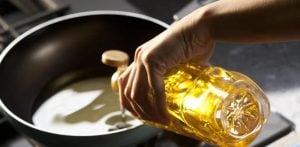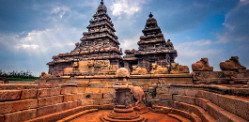"how is the seller ethically authorised to auction them?"
A trove of ancient jewels linked to the Buddha’s mortal remains is set to be auctioned on May 7, 2025, at Sotheby’s in Hong Kong.
Unearthed in 1898 from a dusty mound in northern India, the relics have been housed quietly in a private British collection for over a century.
Their impending sale has reignited debate over the ethics of trading sacred artefacts tied to India’s cultural heritage.
Pearls, rubies, sapphires, topaz and patterned gold sheets were discovered in a brick chamber at Piprahwa in present-day Uttar Pradesh.
They were found alongside bone fragments identified by an inscribed urn as belonging to the Buddha himself.
Nicolas Chow of Sotheby’s called the find “among the most extraordinary archaeological discoveries of all time”.
But as the auction approaches, many scholars and Buddhist leaders are raising concerns about the morality of putting such relics on the market.
Delhi-based art historian Naman Ahuja said:
“Are the relics of the Buddha a commodity that can be treated like a work of art to be sold on the market?
“And since they aren’t, how is the seller ethically authorised to auction them?”
Ahuja questioned the concept of custodianship: “Since the seller is termed the ‘custodian’, I would like to ask – custodian on whose behalf? Does custodianship permit them now to sell these relics?”
The relics were first excavated by William Claxton Peppé, a British estate manager, who handed the main finds to the colonial Indian government.
The bone relics were distributed to Buddhist-majority countries such as Thailand, Myanmar, and Sri Lanka, where they remain objects of veneration.
Sotheby says it followed all legal and ethical protocols before the auction.
Julian King, head of sale for Himalayan Art in New York, said: “As is the case with any important items and collectibles that are offered for sale at Sotheby’s, we conducted requisite due diligence, including in relation to authenticity and provenance, legality and other considerations in line with our policies and industry standards for artworks and treasures.”
Chris Peppé, great-grandson of the original excavator, defended the family’s decision to auction the jewels:
“An auction seems the fairest and most transparent way to transfer these relics to Buddhists.”
He said the family had explored donation, but found that “all options presented problems”.
“The colonisation of India by the British had been a source of some cultural shame for me [and continues to be] but, amidst the treasure hunters who hauled their finds back to England, there had also been people focused on the pursuit of knowledge.”
Peppé also revealed personal insights from his research: “I learned that Willie Peppé’s first wife chose to travel around India for her honeymoon and loved the country and its culture.
“Sadly, she died from an unspecified illness. I learned that my grandmother was outraged at the land laws that applied to Indian women.
“And I learned that the excavation of the stupa was an attempt by Willie Peppé to provide work for his tenant farmers who had fallen victim to the famine of 1897.”

Ashley Thompson, of SOAS University of London, and curator Conan Cheong said the auction raises deeper questions.
They said: “Other ethical questions raised by the sale are: should human remains be traded? And who gets to decide what are human remains or not?
“For many Buddhist practitioners around the world, the gems on sale are part and parcel of the bones and ash.”
They also warned of a colonial dynamic: “The Sotheby’s auction transforms these highly sacred materials into saleable objects, in continuation of acts of colonial violence which extracted them from a stupa and called them ‘gems’ and ‘objects of interest to Europeans’, creating a false division with the ash and bone fragments they were consecrated with.”
The British MahaBodhi Society has also voiced its disapproval.
Amal Abeyawardene said: “The Buddha teaches us not to take other people’s possessions without permission.
“Historical records indicate that the Sakyamuni clan were granted custody of these relics, as the Buddha emanated from their community.
“Their wish was for these relics to be preserved alongside adornments, such as these gems, so that they may be venerated in perpetuity by the Buddha’s followers.”
In response to critics, Peppé said: “No Buddhists regard these as corporeal relics.
“A few Buddhist academics at Western universities have recently offered a convoluted, fact-defying logic whereby they may be regarded as such.
“It’s an academic construct that is not shared by Buddhists in general who are familiar with the details of the find.”
Peppé said only a fraction of the finds, described as “duplicates”, remained with the family. Sotheby’s notes suggest Peppé was permitted to retain about one-fifth of the discovery.
Over the past six years, the jewels have appeared in international exhibitions, including at The Met in 2023.
The Peppé family has launched a website to document their history and research.
Some critics draw comparisons to the Kohinoor diamond, which many Indians believe was taken by force and should be returned.
Ahuja said: “Repatriation, I believe, is seldom necessary.
“Such rare and sacred relics that are unique and which define a land’s cultural history, however, deserve the government’s exceptional attention.”






























































